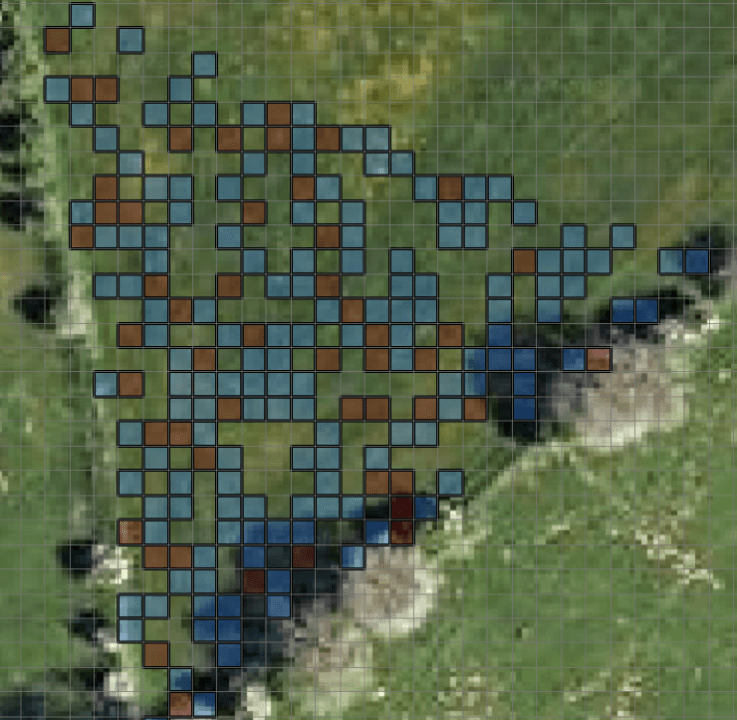
Why digital innovation matters for wildness
March 11, 2024
As you may know, last Sunday (3 March 2024) was World Wildlife Day. What you might not have seen was its theme:
‘Connecting people and planet: exploring digital innovation in wildlife conservation’.
Why digital innovation matters
Digital innovation is critical for both rewilding and the conservation of existing habitat. This can seem paradoxical. Our turning away from the world around us and into our devices is part of the problem. But this is why I think it is important:
- Engaging without trampling
- Low impact monitoring
- Making wildness part of our digital experience
The basics first.
Wildlife is important. There are economic reasons. But if you need the money to be persuaded, you’re probably in the wrong place.
My favourite quote related to this is that there was a very serious, thorough and thoughtful estimation of the value of ‘ecosystem services and natural capital’. This was done about 25 years ago.
The value was put at 33 trillion dollars. And was described as "a serious underestimate of infinity” (Toman, 1998)
A brief summary of the original research and criticism can be seen here: Audacious bid to value the planet whips up a storm | Nature
We are living in a world the result of hundreds of millions of years of evolution. Layers and layers of intricate inter-weavings and interdependencies. We are miniscule in the face of this – whales have been singing longer than humans have existed as a species.
I cover this more in my first newsletter: https://www.linkedin.com/pulse/you-dont-need-love-nature-value-wild-jon-conradi-wufff/
This is just one reason we should care about wildlife. And actively conserve, protect and rewild.
So how? This is where digital innovation comes in:
Engaging without trampling
This best way to engage with wildlife is to experience yourself as part of it. Go for a walk, notice the life around you. Try to learn birdsong, identify trees, signs of changing seasons. We are naturally a social species, and not just with ourselves.
However, there are 9 billion of us.
We need to find new ways to engage with the rest of the living world. There are places that are open for us to explore, discover and be part of. But there should be limits, especially on land that is not able to support high numbers of visitors. This includes wildlife hotspots, delicate ecosystems at risk of collapse, or land that is being restored.
This doesn’t mean no visits. And in many cases there are indigenous people that are already effective custodians of land. There are also opportunities to engage people in activity such as planting, monitoring, or learning.
Nevertheless, being able to connect people to this land with limited physical contact becomes increasingly important. We see the potential of this already with documentaries. David Attenborough can make us feel part of the deep blue sea, the savannahs, jungles and many other magnificent wild landscapes he shows and describes.
We need more of this, more personalised, and in someways more mundane. A bridge between our hedges, and the jungle far away; our robins, and hummingbirds; our foxes, and tigers.
We need to encourage people out into the land again, but be able to explain why some places need to be treated with reverence and distance.
Low impact monitoring
There have been technological improvements that make it much easier and affordable to monitor land with lower impact.
From camera and audio sensers, drones, satellite mapping, to E-DNA and use of AI to make sense of data. This rarely replaces on the ground expertise. But definitely helps complement it and makes monitoring lower impact and potentially more accurate.
These innovations are also starting to make this more accessible to people without deep ecological knowledge. This makes it easier to both see and hear wildlife. But also to see change and difference in a landscape.
Making wildness part of our digital experience
For many of us, a large part of our lives are lived on-line. This could be engaging with people: family, colleagues, friends. Or things: buying food, clothes and items needed around the house. Or entertainment: music, TV or games.
But it is rarely wildness. Especially in the everyday.
Listening to birdsong on your laptop is rarely going to compare to hearing birdsong whilst walking. And finding and seeing that bird sing. But it can be complementary.
We need to find ways to bring more wildness to all parts of our lives. From our physical world, to our digital world to our conversations, to our actions.
Digital innovations can help us find ways to this.
For example through my business I am experimenting with connecting people to land that is being restored. This is reliant on digital innovations. From using what3word squares to create unique tie between a person and land, to using technology to capture and bring to life the changes. As well as the wildlife.
The aim is not just to restore land, but to restore wildness to people. And that means, engaging with digital innovation, as well as actively transforming land back into habitat.
